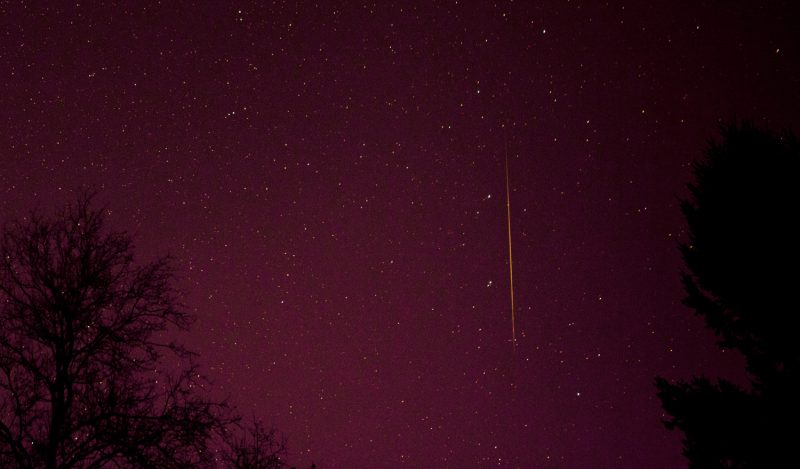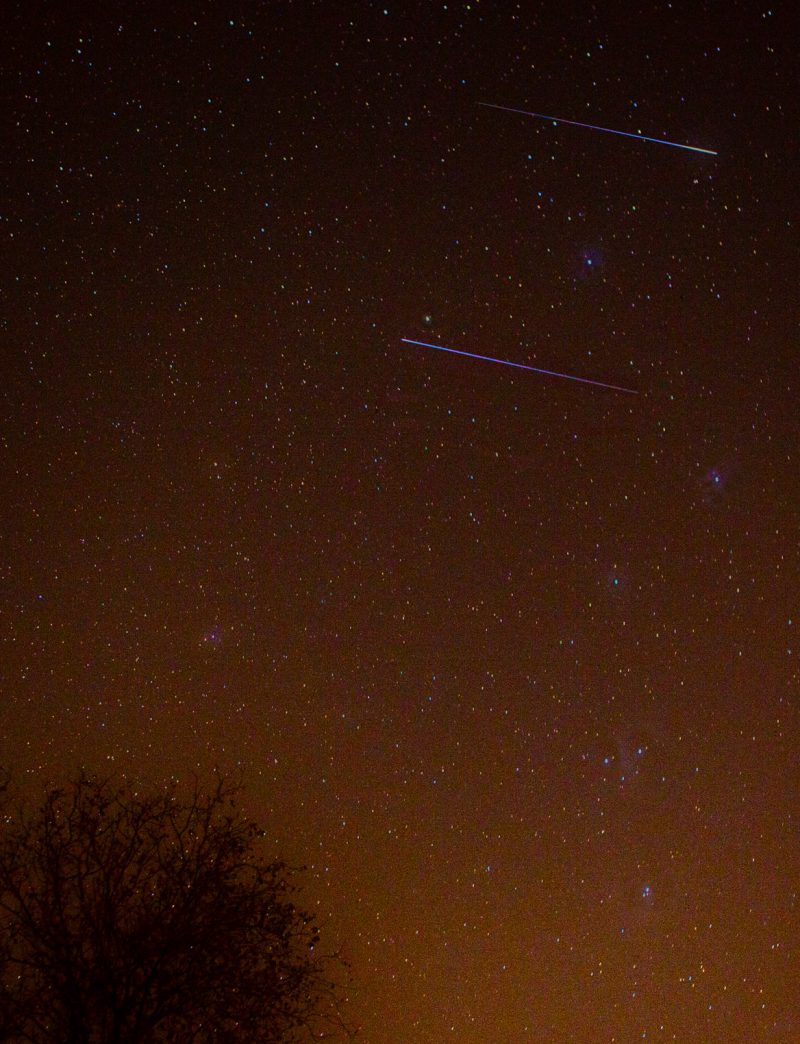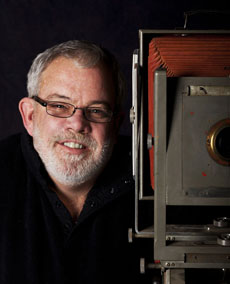
By Henry Shaw of SummersMagic Photography in Baltimore, Maryland.
[Editor’s Note: Meteor showers are going on now and will last through mid-August! We’ve already been getting photos of Perseid and Delta Aquarid meteors. For general reference, here’s EarthSky’s meteor shower guide for 2022.
Do you want to shoot photos of meteors?
Have you ever been outside on a clear night and had the unexpected pleasure of seeing a shooting star go whizzing by?
Ever wanted to try and capture a shooting star – also called a meteor – with your camera?
In this post, we’ll go over the equipment you need, and the steps you should follow, to capture your very own meteor. So, check out the steps below to learn more about how to shoot photos of meteors, or shooting stars.
First … make a plan
Basically, the first step in capturing that shooting star image is planning. However, you’ll increase your odds of success if you head out on a night that coincides with a meteor shower.
So to find that perfect meteor shower check the EarthSky meteor shower guide. Along with the dates of upcoming meteor showers for the year, you’ll find the peak date and expected meteor rates per hour near the predicted peak. Plus learn where to find the meteor shower radiant point in the sky, and maybe details of past performances.
After you’ve selected your meteor shower, there are three factors to be consider before you head out: the location you’ll shoot from, the weather and the phase of the moon. Because all of these will have a direct impact on your success.
Above all, you’ll want to shoot from a location far away from city and ambient light. State Parks make a great choice but check in advance to make sure they’re open after dark and if they have lights on at night. Also, scout out your campsite in advance to find one offering the most open view of the night sky.
The weather is critical. You need a very clear night.
If the moon is up and full, try to shoot before the moon rises or after it sets because the light from the moon will block out over half of the meteors you’d see otherwise.

Next … gather your equipment.
Finally, you’ve picked a location, you know the best date and time to observe, you’ve checked the weather and moon phase during the meteor shower. Now what?
Next grab your camera bag and select the hardware you’ll be using. Below is a basic check list of the minimum requirements to capture a shooting star.
- DSLR body
- All your camera batteries or extended grip if you have one
- Fast wide-angle prime or zoom lens (f2.8 or faster) with UV or skylight filter attached
- Heavy duty tripod
- Cable release or intervalometer (see below)
- A good flashlight with a red filter to protect your night vision
- Lens-cleaning supplies
- A comfortable outdoor reclining chair
Why do I suggest a wide-angle lens and not a telephoto lens? Probability. Because the more sky you cover, the greater the likelihood of capturing a shooting star. Also, you can cover twice as much sky with a 24 or 28mm lens than you can with a 50mm lens and the difference gets more dramatic the longer the lens gets. Although you may get lucky and pick just the right spot with a telephoto lens, your odds of getting a perfect shot increase tremendously when you cover a greater area of sky.
An intervalometer is like a cable release on steroids. Besides with a cable release, you’re only shooting one frame at a time. But with the intervalometer, you can program the length of the exposure, and the delay between shots. Plus it allows you to program the number of frames you want to shoot.

Finally … shoot photos of meteors!
And now let’s examine the capture process itself.
Below is a check list to follow in setting up your camera:
- Setup and level the tripod.
- Mount your camera and estimate where the best position and angle is for shooting.
- An astronomy app on your smartphone can help find the location of constellations.
- Set the shutter speed on “B” or Bulb.
- Shoot RAW images for better processing ability, use JPEG is you have limited memory.
- Put your lenses focus control switch on “MANUAL” this will keep it from searching for infinity in the dark.
- Set the aperture to wide open.
- Attach your cable release or Intervalometer.
- Set the focus to infinity by manually aligning the infinity mark on the lens with the focal length point on the barrel you are using.
- Set the ISO to either 800 or 1600 to start (experiment from there).
- If your camera has mirror lock-up, use it (this will reduce vibration caused by the mirror).
- Verify your exposure settings (suggested exposure of 30 seconds to avoid star movement).
- Press the start or release button.
- Check your first frame for focus by zooming in on the LCD display screen and adjust if necessary.
Check your first shots for necessary adjustments
After shooting the first frame, check the focus. Infinity may not be perfectly on the mark for you, with your lens at wide-open. Adjust focus accordingly.
Then check the exposure. If there’s ambient light in the frame, you may want to shorten your exposure time for better results. When there’s no ambient light to consider, a good base exposure is 30 seconds. At 30 to 45 seconds your star background will look like a night sky. Any longer and you begin to get motion in the stars. The longer the exposure, the more of Earth’s rotation you’re going to capture and start to show star trails. Don’t change the aperture as this will prevent all but the brightest shooting star from leaving an impression on the sensor.
Once you’ve started shooting, watch your camera’s power closely. Cold temperatures will quickly drain your battery, so stay ahead of it.
Dealing with cold weather
Cold temperatures will quickly kill your battery power. Foremost, plan on running through batteries quickly. Batteries don’t hold a charge well when it’s below freezing. A lithium-ion battery will only last about 1.5 hours of near continuous shooting. A set of six AA’s will last 45 minutes if you are lucky. Keep the batteries tucked close to your body, inside your coat, to keep them warm.
Cold temperatures can also provide a challenge with frost on your lens filter. You can see this clearly on your LCD display as a haze or glow building up around the brighter stars in the frame. Do not use any kind of moisture or cleaning solution; it just freezes and makes things worse. Same with trying to use your breath. I’ve had limited success using a dry Norwex glass cloth but the best solution is to have a portable propane heater or other source of heat in the general area of the camera to keep temps above freezing.
The cold doesn’t just affect the batteries and filter. After several nights of freezing my buns off, I have started wearing several layers of clothes that include a down parka and thermal gloves. I’ve combined this with an insulated sleeping bag and a heating blanket tucked inside. I am lucky to have access to power where I shoot. Plan accordingly to stay warm. You could stay in your car if you are using an intervolameter, but I like being close to my hardware so I can check my power and lens often.
Shooting meteor showers during the summer months is a lot less complicated. Aside from the equipment all you’ll need is bug repellent … lots of bug repellent. However, still bring plenty of warm clothing, even the nights in summer can get chilly.
Protect your tripod and other tips to shoot photos of meteors
Be aware of where your tripod and camera are, and of where you are in relationship to other people, if they are present. I’ve seen more than one camera end up on the ground after someone tripped over a black tripod and black camera in the dark. If that happens, you’ll be thankful you have a filter protecting your lens.
By the way, today’s cell phones are also capable of capturing images of the night sky and meteors. They can do timed exposures and often have night time settings. With the digital world, you can see instantly if you have a “keeper” or what adjustments you need for the perfect shot.
One final recommendation: have fun! And if you get a good photo, consider sharing it with EarthSky on Facebook or EarthSky Community Photos.

Based in Baltimore, Maryland and operating under the name SummersMagic Photography, Henry Shaw has had years of experience as a photojournalist and commercial photographer. He says he was originally fascinated with lightning, after receiving a challenge to capture a bolt with the Atlanta skyline some 40 years ago. It wasn’t until he and his wife became RVer’s, he says, that he became obsessed with shooting stars. Fortunately shooting lightning translates well technically for catching shooting stars.
Enjoying EarthSky? Sign up for our free daily newsletter today!
Bottom line: Follow these tips to learn how to shoot photos of meteors on your camera.
The post Learn to shoot photos of meteors first appeared on EarthSky.
0 Commentaires